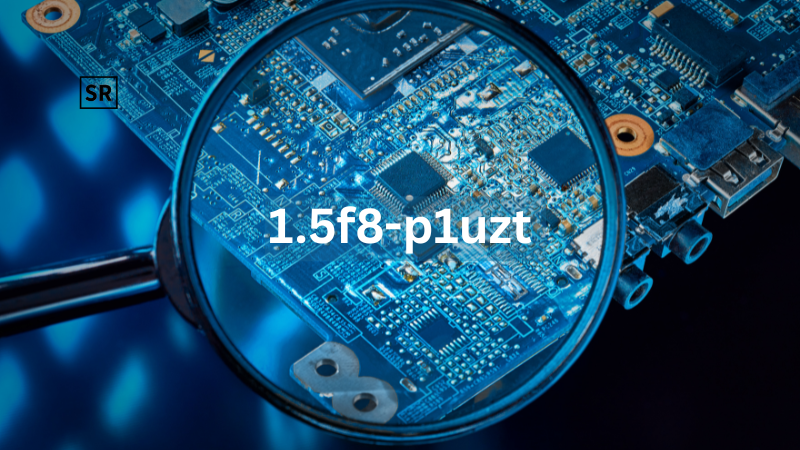In today’s evolving landscape of digital design and material sciences, surface qualities and textures play a decisive role in shaping how users interact with visual and physical environments. One emerging term gaining attention is 1.5f8-p1uzt Texture, a concept that blends technical depth with creative applications. While it may sound complex, this texture represents a synthesis of advanced computational modeling, design precision, and material simulation. Understanding it requires a close look at how textures influence perception, performance, and innovation in both digital and real-world contexts.
What is 1.5f8-p1uzt Texture?
The 1.5f8-p1uzt Texture is not a traditional term like “grain” or “fabric weave.” Instead, it describes a highly specialized surface property generated through algorithmic design. Its name suggests a coded structure, implying that the texture is the product of computational processes rather than natural formation. This makes it particularly relevant to digital visualization, 3D rendering, and industries like gaming, architecture, and product design, where textures add realism and depth to virtual objects.
The Science Behind Advanced Digital Textures
Textures are essentially patterns of surface interaction with light and touch. Scientifically, they are defined by microstructures that alter how light scatters or how surfaces feel under contact. The 1.5f8-p1uzt Texture follows this principle but takes it further with data-driven modeling. Algorithms simulate thousands of micro-patterns, refining them to create highly detailed, repeatable surface qualities that can be adapted for different design goals.
For instance, in 3D environments, textures provide depth perception without increasing polygon counts, which means more realistic visuals without compromising performance. The computational nature of 1.5f8-p1uzt makes it scalable and adaptable to multiple digital ecosystems.
Applications in Digital Design
1. Gaming and Virtual Reality
In gaming, realism is key to immersion. The 1.5f8-p1uzt Texture can replicate natural materials like stone, metal, or skin while keeping file sizes efficient. This improves rendering speeds while maintaining a lifelike experience.
2. Architectural Visualization
Architects rely on detailed textures to show how a space will look once built. This texture provides accurate representations of concrete, wood, or futuristic materials, giving stakeholders a true-to-life preview of projects before construction begins.
3. Product Prototyping
For consumer goods, designers can apply the 1.5f8-p1uzt Texture to digital prototypes. This enables them to evaluate the tactile appeal of a product before committing to expensive manufacturing processes.
Why Textures Matter in User Experience
The significance of textures goes beyond aesthetics. They directly affect usability and emotional responses. Research shows that tactile or visual texture influences perception of quality. A smartphone, for example, feels more premium with a carefully engineered surface finish. Similarly, in digital contexts, realistic textures enhance trust and immersion.
The 1.5f8-p1uzt Texture stands out because it merges both visual and practical considerations. Its algorithmic design ensures consistency, while its adaptability makes it suitable for industries that prioritize both functionality and appearance.
The Role of AI in Texture Creation
Artificial Intelligence has transformed how designers approach texture generation. Machine learning models can study thousands of real-world samples and generate synthetic variations. The 1.5f8-p1uzt Texture likely incorporates AI-assisted design, which helps in automating complex surface simulations.
This results in faster prototyping cycles and greater creative freedom. Instead of manually crafting textures, designers can leverage AI to explore endless variations, all while maintaining a structured quality defined by the original algorithm.
Technical Characteristics of 1.5f8-p1uzt Texture
Several technical features make this texture unique:
- Algorithmic Precision – Every pattern follows a coded structure, minimizing random noise.
- Scalability – It can be applied to small consumer products or large architectural projects without losing detail.
- Material Adaptability – Whether simulating glossy surfaces or matte finishes, the 1.5f8-p1uzt Texture can be tuned to match the desired outcome.
- Performance Efficiency – Optimized coding ensures minimal strain on rendering systems, a crucial factor in gaming and VR.
Comparisons with Conventional Textures
Traditional textures often rely on scanned images or hand-crafted patterns. While these methods produce beautiful results, they lack adaptability. Any scaling or stretching risks distortion. The 1.5f8-p1uzt Texture, on the other hand, is data-driven. This ensures flexibility, allowing it to be resized or reoriented without visual compromise.
Additionally, conventional textures may have licensing restrictions or file-size limitations. Computationally generated textures, by contrast, are lightweight and can be customized infinitely, making them more suitable for modern digital workflows.
Potential in Emerging Technologies
As industries like augmented reality (AR), metaverse development, and digital twins continue to expand, the role of high-quality textures becomes even more critical. The 1.5f8-p1uzt Texture aligns with these needs by offering accuracy and adaptability. In AR, for example, textures must seamlessly integrate with real-world environments. Similarly, digital twins in engineering rely on precise surface modeling for testing and optimization.
Challenges and Limitations
Despite its advantages, the 1.5f8-p1uzt Texture is not without challenges.
- Learning Curve – Designers may need specialized training to effectively implement it.
- System Compatibility – Not all software platforms currently support advanced texture codes.
- Creative Constraints – While algorithmic textures ensure precision, some argue that they limit artistic spontaneity compared to hand-made approaches.
Addressing these challenges will be essential for broader adoption across industries.
Future of Texture Innovation
Looking ahead, the demand for realistic, adaptable, and efficient textures will only increase. Advances in generative AI, cloud computing, and real-time rendering will continue to push boundaries. The 1.5f8-p1uzt Texture may evolve into a standard framework, offering designers a balance between creativity and technical reliability.
As industries merge physical and digital realities, textures like these will become the backbone of immersive design. Whether in consumer products, virtual experiences, or architectural models, they will define how users perceive quality and interact with digital creations.
Conclusion
The 1.5f8-p1uzt Texture represents more than just a design feature; it embodies a shift toward algorithmic precision and innovation in material representation. From gaming to architecture and beyond, it serves as a tool for enhancing realism, efficiency, and adaptability in modern workflows. While challenges remain, its potential to shape the future of digital design is undeniable.
More Details : Can Laturedrianeuro Spread: An In-Depth Informative Guide
